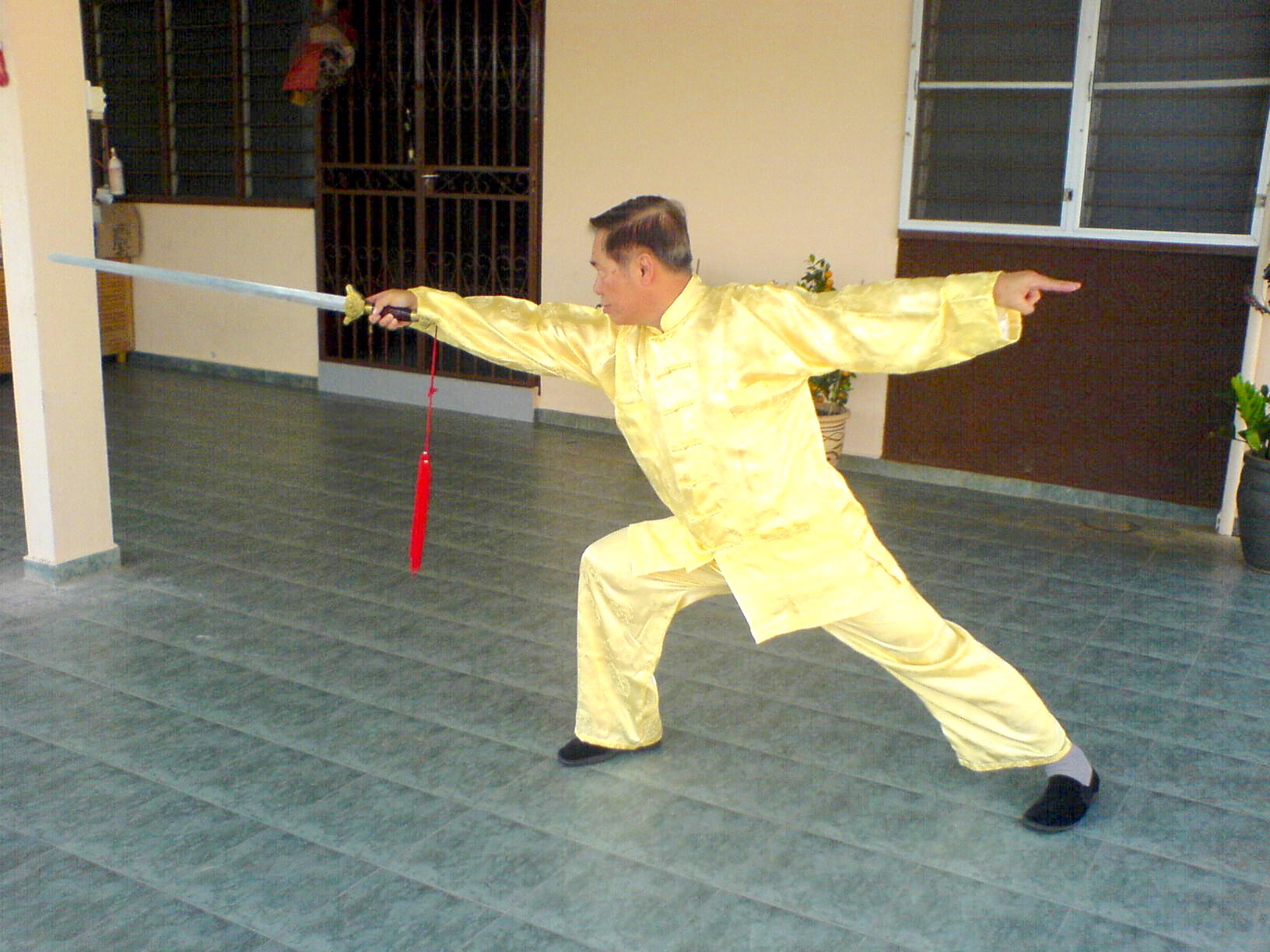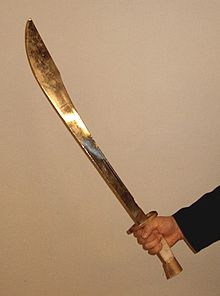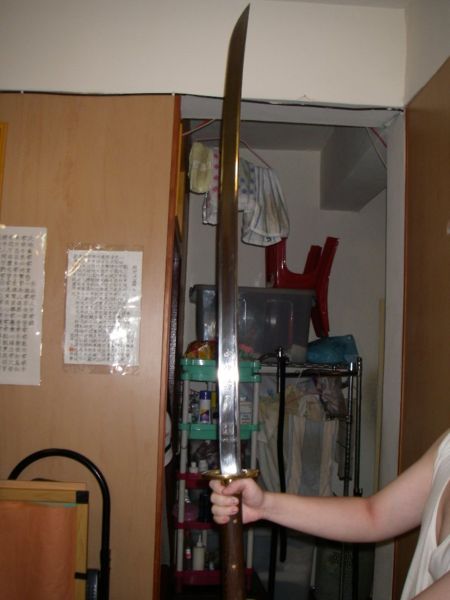
House Liao Image So Wrong In So Many Ways
#21
Posted 02 July 2013 - 10:36 PM
#22
Posted 02 July 2013 - 10:39 PM

also, i'm going to try to play devil's advocate, and say; maybe what the artist was thinking about is this:

but his own ignorance or maybe ineptitude at design failed to realize there is a difference in the clothing styles.
that's the best i can defend it.
#23
Posted 02 July 2013 - 10:40 PM
while most people would agree that there are canadians in america, especially in seattle. I think if there was an website describing america to other people and it shows a picture of a mountee, most people would say that is wrong.
#24
Posted 02 July 2013 - 10:45 PM
 Mazzyplz, on 02 July 2013 - 10:39 PM, said:
Mazzyplz, on 02 July 2013 - 10:39 PM, said:
also, i'm going to try to play devil's advocate, and say; maybe what the artist was thinking about is this:
but his own ignorance or maybe ineptitude at design failed to realize there is a difference in the clothing styles.
that's the best i can defend it.
Thanks for trying. I dont' think anyone would disagree that the BT creators made they're share of mistakes.

It looks like this to me. He is also using a kendo stance, with two hands on the hilt.


Its probably not that big of a deal to anyone else. But as someone who is fairly knowledgeable about both cultures, its a bit unsettling.
Edited by Tie Ma, 02 July 2013 - 11:13 PM.
#25
Posted 02 July 2013 - 10:49 PM
had to try though!
#26
Posted 02 July 2013 - 11:08 PM
Perhaps there is a training remote just out of frame...
#27
Posted 02 July 2013 - 11:10 PM

The dao also has a broader tip, whereas the katana continues the same width right along. We can't see more than a foot of the blade, though, so just judging off the handle, I'm going with dao, not katana.
I can't explain what the outfit is, but it's also not a karate keikogi. Yes, the outfit in the picture has a belt. But so does my dressing gown, and frankly, the belt's style has more in common with my dressing gown than the flat, stiff belt of my gi. The upper section of the keikogi also has two parts that overlap, with the overpart's seam meeting at the left hip. The outfit in the picture meets in the middle, more like the outfit in Mazzyplz's image, though not identical (as I said, not trying to state what it is, just that it's not a keikogi)
 Mazzyplz, on 02 July 2013 - 10:39 PM, said:
Mazzyplz, on 02 July 2013 - 10:39 PM, said:

#28
Posted 02 July 2013 - 11:15 PM
 Sparks Murphey, on 02 July 2013 - 11:10 PM, said:
Sparks Murphey, on 02 July 2013 - 11:10 PM, said:

The dao also has a broader tip, whereas the katana continues the same width right along. We can't see more than a foot of the blade, though, so just judging off the handle, I'm going with dao, not katana.
I can't explain what the outfit is, but it's also not a karate keikogi. Yes, the outfit in the picture has a belt. But so does my dressing gown, and frankly, the belt's style has more in common with my dressing gown than the flat, stiff belt of my gi. The upper section of the keikogi also has two parts that overlap, with the overpart's seam meeting at the left hip. The outfit in the picture meets in the middle, more like the outfit in Mazzyplz's image, though not identical (as I said, not trying to state what it is, just that it's not a keikogi)

There most certainly is a long handle in the sword he is wielding. Plus if you look closely you can make out the iconic cross wrapped diamond pattern handle. Further more he is using a kendo stance with both hands, although not exactly a good one but, our argument is that the artist isn't knowlegeable about the culture so that is no suprise. As expected the length of the handle is not right either.
While the Da dao is sometimes (rarely) used with both hands. the Dao is generally one handed. Furthermore Dao generally have curved handles, to fit the contour of the 1 hand holding it. While in the image the handle is straight
the above can also be said for the illustration of the gi. Out of the entire outfit, the material of the belt and the manner in which it is worn does not discount what the artist is trying to portray, especially in light of the many undeniable similarities and shape.
Edited by Tie Ma, 02 July 2013 - 11:25 PM.
#29
Posted 03 July 2013 - 12:13 AM
 Tie Ma, on 02 July 2013 - 11:15 PM, said:
Tie Ma, on 02 July 2013 - 11:15 PM, said:

There most certainly is a long handle in the sword he is wielding. Plus if you look closely you can make out the iconic cross wrapped diamond pattern handle. Further more he is using a kendo stance with both hands, although not exactly a good one but, our argument is that the artist isn't knowlegeable about the culture so that is no suprise. As expected the length of the handle is not right either.
While the Da dao is sometimes (rarely) used with both hands. the Dao is generally one handed. Furthermore Dao generally have curved handles, to fit the contour of the 1 hand holding it. While in the image the handle is straight
the above can also be said for the illustration of the gi. Out of the entire outfit, the material of the belt and the manner in which it is worn does not discount what the artist is trying to portray, especially in light of the many undeniable similarities and shape.
"It doesn't look like it, but the artist could have been misrepresenting his misrepresentation of Chinese culture" doesn't sound as convincing to me as "The artist drew something, and I'm making my own mind up to fit my theory into what I'm seeing".
You see two hands on the sword and think "kendo". I see two hands that are holding the sword in a straight fist rather than a diagonal fist and think "not kendo". While I agree that a dao is a one handed weapon, I never said that it was certainly a dao, just that it wasn't a katana: the hold is wrong. I never said that it didn't have a long handle, just that it's not long enough for a katana; that would take the end of the handle past the bottom of the arm cuff. I'm...not seeing the diamond pattern. Unless you're talking about the random lighter pixel among the rest of the handle, which I'm pretty sure is an artifact of the terrible image quality, or the blob of grey near the bottom, which I think is the hilt. To say that the artist got his representation of a katana wrong, and then accuse him of using a katana wrong in the first place based on your assumption that it is a katana seems silly, though.
Regarding the outfit, this:
 Tie Ma, on 02 July 2013 - 10:45 PM, said:
Tie Ma, on 02 July 2013 - 10:45 PM, said:

is closer to this:
 Mazzyplz, on 02 July 2013 - 10:39 PM, said:
Mazzyplz, on 02 July 2013 - 10:39 PM, said:

Than to this:
 Tie Ma, on 02 July 2013 - 11:15 PM, said:
Tie Ma, on 02 July 2013 - 11:15 PM, said:

Which in turn, is closer to this:
 Mazzyplz, on 02 July 2013 - 10:39 PM, said:
Mazzyplz, on 02 July 2013 - 10:39 PM, said:

Again, I'm not saying that it is a traditional Chinese outfit, just that it doesn't match directly with the gi, and there are plenty of other things it could be. If you find that it matches with a Korean outfit and blade, then congrats, the artist was wrong. If you find a statement from the artist saying, "Well, I was trying to draw a katana and gi, because all Asian people are alike, right?" then congrats, the artist was wrong. But don't tell me that these things that don't resemble a gi or a katana any more than other more legitimate articles are definitely a gi and a katana, then explain it away because the artist is culturally insensitive and hold it up as proof that the artist is culturally insensitive. That's begging the question.
#30
Posted 03 July 2013 - 01:42 AM
Also, all Warrior Houses of Liao are extreme nutcases, with only the Death Commandos (a pseudo Warrior House of their own) more so. They are more Samurai than the Kuritans. Its not just Warrior House Fujita. Its **ALL** of them. The Warrior Houses can be traced in Battletech lore to one Colonel Hiritza Hikaru.
The eight known Houses are Imarra, Hiritsu, Fujita, Matsukai, Daidachi, Ijori, Kamata, and Lu Sann. Use of ceremonial Katana is required in all of them.
Now lets go back to reality. The flaring tip Dao most characterized with Chinese martial arts actually appeared fairly late in Chinese history. This is called the Oxtail Dao or Niuwedao, and itself was never used by the Chinese or Qing Dynasty military, but by civilians during various revolts and insurrections against the Qing Dynasty in the mid to late 1800s. But the last time Chinese used swords in battle, in World War 2 actually, this type of sword was no longer used. Instead the Dadao (the war dao in Cold Steel's ads) and the Miao Dao. The Miao Dao --- historically far more important in Chinese military history than the Oxtail Dao --- is a long long sword that you can confuse as a Katana. Its more the equivalent to the Japanese Nodachi or Odachi. The Katana is limited to a blade length of 28", but the Miao Dao can have a total length in excess of 5'. The Miao Dao can be traced to the Chang Dao of the Ming Dynasty, where General Qi Jigua devised a long sword to counter the Japanese pirates plaguing the eastern Chinese coasts. Many of these pirates appear to be Ronin that practice an esoteric Kage Ryu style unique to Fukuoka Island (the southernmost of the four main Japanese islands and closest to China). The Kage Ryu uses extremely long swords, similar to Odachi or Nodachi, but after the Japanese Bakufu government decided to restrict swords to a blade length of 28", these samurai found their skills useless, out of a job and threatened to have their swords destroyed, a particularly sore point because the sword is the soul of the Samurai. In battles against the Japanese pirates, a Kage Ryu manual fell to Chinese hands, and Qi Jigua used this manual in combination with Chinese martial arts techniques to create a new martial arts system centered around a long sword. This in later years became known as the Miao Dao and is still practiced today, even thought in military schools.
Even if we go back to earlier history, the origins of the Katana and all Nihonto can be traced back to China, with regards to the basic shape, the metallurgical techniques, such as clay differential heat treatment, the multiple layering and folding, the 3 layer sandwich called Sanmin. Despite the popular media, the thousands of archeological swords in both China and Japan attest that from the Han Dynasty to the Tang Dynasty, the predominant sword is the long thin dao, which can be single handed for fighting in horseback, or two handed for anti cavalry. These dao are called chokuto in Japan. The difference between the long thin Chinese dao vs. the Japanese sword is that the Chinese sword remained straight, in order to facilitate techniques learned with the straight Jian; that Chinese dao are either single or two handed, whereas Japanese swords are two handed; and Chinese Dao often have a ring pommel at the end of the base (sometimes depicted in anime but ringed pommels in Japan only existed in the Yamato era and likely to be Chinese imports). In the Tang Dynasty, ringed pommels were removed but came back again in the succeeding dynasties. Should note that the Japanese word "Ken" like in Kendo is the same character as the Chinese "Jian", and in fact both are the same cognate. In native language, the Japanese term for the Jian is Tsurugi, like the Kusanagi no Tsurugi.
Perpetually faced with the threat of northern horse riders (Huns, Jurchens, Mongols, etc,.), the Chinese also equip elite legions with a long thin sword called the Zhanmadao, or Horse Chopping Saber. These legions are supposed to face cavalry charges, then slash down the rider with one stroke or a sweeping cut across the horse's knees. The Japanese cognate for Zhanmadao is Zanbato, and this is fairly equivalent to the Japanese Nakamaki.
The official Qing Dynasty (Manchu) swords are either the Yanmadao (Goose Leaf Saber) or the later Liuwedao (Willow Leaf Saber). These are also long thin swords with gentle curves, unlike the flaring broadswords or the wide dadao. But unlike the Japanese swords, these have a curved pistol like handle, which is definitely Central Asian in influence, introduced by the Mongols and the Manchus, and have a connection with Turkish sabers. The best way to think of these swords are a katana with a machete handle. The elite Manchu Banner armies are equipped with these, while the Green Standard Army (aka Cannon Fodder) are filled with ethnic Chinese equipped with Dadao, Miao Dao, Zhanmadao and Wo Dao (collective term for Japanese style swords), while the revolutionary armies facing them tend to be equipped with the flaring broadsword Oxtail Dao.
Because of the unfortunate connections to "foreigners" that the other swords tend to make, the Oxtail Dao itself grew to become a symbol of Chinese nationalism, and its legend perpetuated with martial arts movies, totally eclipsing in a collective social amnesia, to what Chinese swords historically truly are.
Edited by Anjian, 03 July 2013 - 01:54 AM.
#31
Posted 03 July 2013 - 02:16 AM
 Tennex, on 02 July 2013 - 10:17 PM, said:
Tennex, on 02 July 2013 - 10:17 PM, said:
Quote
The 2010 United States Census reported that Los Angeles County had a population of 9,818,605. The racial makeup of Los Angeles County was 4,936,599 (50.3%) White, 856,874 (8.7%) African American, 72,828 (0.7%) Native American, 1,346,865 (13.7%) Asian (4.0% Chinese, 3.3% Filipino, 2.2% Korean, 1.0% Japanese, 0.9% Vietnamese, 0.8% Indian, 0.3% Cambodian, 0.3% Thai, 0.1% Pakistani), 26,094 (0.3%) Pacific Islander (0.1% Samoan), 2,140,632 (21.8%) from other races, and 438,713 (4.5%) from two or more races.
Non-Hispanic whites were 2,728,321 (27.8%) of the population.[16] Hispanic or Latino of any race were 4,687,889 persons (47.7%); 35.8% of Los Angeles County is Mexican, 3.7% Salvadoran, 2.2% Guatemalan, 0.5% Puerto Rican, 0.4% Cuban, 0.4% Honduran, 0.4% Nicaraguan, 0.3% Peruvian, 0.3% Colombian, and 0.2% Ecuadorian.[17]
From 2010.
Can we end this hilariously off topic and unintentionally racist derail?
#32
Posted 03 July 2013 - 02:21 AM
 Sug, on 02 July 2013 - 10:36 PM, said:
Sug, on 02 July 2013 - 10:36 PM, said:
At least some Space Canadians live here, under the rulership of Baron Grayson "Death" Carlyle, the man who started his unit by taking on a Locust on foot with an inferno launcher.
Edited by Victor Morson, 03 July 2013 - 02:23 AM.
#33
Posted 03 July 2013 - 02:44 AM

Or, as has been said, a guy from the Warrior House Fujita.
#34
Posted 03 July 2013 - 07:28 AM
 Victor Morson, on 03 July 2013 - 02:21 AM, said:
Victor Morson, on 03 July 2013 - 02:21 AM, said:
Alright they can have 1 planet. But I better not hear about them again.
#35
Posted 03 July 2013 - 07:51 AM
 Sparks Murphey, on 03 July 2013 - 12:13 AM, said:
Sparks Murphey, on 03 July 2013 - 12:13 AM, said:
is closer to this:
Than to this:
Which in turn, is closer to this:
That's begging the question.
Since we are citing logical fallacies(wrongly i might add), it thinnk its pretty clear even to you, that is a steep slope argument.
and if you had any visual sense like some of the other people in this thread. it would be very apparent that the depicted attire looks nothing like a chinese han fu. Which are almost always of silk (even in your two steep slope examples, if you didn't notice). There is never a belt, tied in such a fashion used in any han fu.
There is no question that out of any asian cultures present, the depicted attire is closest to the Gi and the weapon is closest to the Katana.
and if the artist WERE culturally sensitive. Why would he draw something so close to japanese culture, as opposed to someone using a dao and wearing a han fu, something traditionally chinese.
Why would he draw something that could even be confused as a Gi or Katana?
Edited by Tie Ma, 03 July 2013 - 08:08 AM.
#36
Posted 03 July 2013 - 08:13 AM
 Tie Ma, on 03 July 2013 - 07:51 AM, said:
Tie Ma, on 03 July 2013 - 07:51 AM, said:
Since we are citing logical fallacies(wrongly i might add), it thinnk its pretty clear even to you, that is a steep slope argument.
and if you had any visual sense like some of the other people in this thread. it would be very apparent that the depicted attire looks nothing like a chinese han fu. Which are almost always of silk (even in your two steep slope examples, if you didn't notice). There is never a belt, tied in such a fashion used in any han fu.
There is no question that out of any asian cultures present, the depicted attire is closest to the Gi and the weapon is closest to the Katana.
and if the artist WERE culturally sensitive. Why would he draw something so close to japanese culture, as opposed to someone using a dao and wearing a han fu, something traditionally chinese.
Why would he draw something that could even be confused as a Gi or Katana?
it always surprises me the ridiculous arguments people make to try to justify FASA's mixups
Edited by Tennex, 03 July 2013 - 08:13 AM.
#37
Posted 03 July 2013 - 11:27 AM
#38
Posted 03 July 2013 - 02:21 PM
 Tie Ma, on 03 July 2013 - 07:51 AM, said:
Tie Ma, on 03 July 2013 - 07:51 AM, said:
Since we are citing logical fallacies(wrongly i might add), it thinnk its pretty clear even to you, that is a steep slope argument.
Ooh, a logic fight, eh? Let's go.
To start with, nice misquote. Here, let me fetch you the rest of that quote.
 Sparks Murphey, on 03 July 2013 - 12:13 AM, said:
Sparks Murphey, on 03 July 2013 - 12:13 AM, said:
The begging the question wasn't referring to the "Regarding the outfit, this: is closer to this: Than to this: Which in turn, is closer to this:", but was referring to the sentence immediately prior to it, namely that you can't assume something, based a premise off that assumption, then use the premise to demonstrate the assumption. You assume the artist has drawn a katana and gi because they are culturally insensitive, then use that inherent assumed cultural insensitivity to justify the overall assumption.
As far as a steep slope (I suspect you meant slippery slope) argument goes, that actually works against you, not against me. The steep slope argument says that you can't start from 1, see 2, 3 and 4, and then go on to assume 10. In this case, let's say 1 is a han fu, and 10 is a gi. I'm not arguing that it's 1. I'm arguing that it's 2, 3, 4, 5, 6, 7, 8, 9, maybe even 9.9, but not 10. That is to say, I don't believe it's a gi. I agree it's not a han fu. But your argument that it's not a han fu, and therefore must be a gi, is skipping the middle possibilities in between. And that's a slippery slope fallacy. I'm quite happy with it not being a han fu. I'm just saying that not being a han fu doesn't make it a gi, which I've demonstrated other proofs supporting it's non-gi-ness.
 Tie Ma, on 03 July 2013 - 07:51 AM, said:
Tie Ma, on 03 July 2013 - 07:51 AM, said:
Straight out the gate, you've got an ad hominem there. Demonstrate, without resorting to begging the question by referring to this thread, that I have no visual sense.
 Tie Ma, on 03 July 2013 - 07:51 AM, said:
Tie Ma, on 03 July 2013 - 07:51 AM, said:
Firstly, I've never claimed it was a han fu. In fact, in pointing out that the gi and the han fu shared a collar-to-hip cut that isn't shared by the outfit in the picture, I've implicitly agreed that it's not a han fu. So, we're at least agreed: it's not a han fu. But as I argued earlier, not being a han fu doesn't make it a gi. My dressing gown isn't made of silk and it has a belt, but it's not a gi either.
Secondly, I want whatever monitor you are using that let's you see what material the illustrated outfit in the picture is made of. Okay, sarcasm aside, I have no idea where you're getting the premise that the outfit in the picture is made of something other than silk. The best I can do is appeal to the abundance of curves and flowing lines, that don't suggest the stiff canvas of a gi to me, but honestly, I have no idea what that thing is made of. I'll let you know when forensics gets back to me.
 Tie Ma, on 03 July 2013 - 07:51 AM, said:
Tie Ma, on 03 July 2013 - 07:51 AM, said:
^ Questions. Right there.
Also, you're limiting yourself to asian cultures. My dressing gown, a western outfit, has a better approximation to the depicted attire than either a gi or a han fu. Note: I'm also not saying that he's wearing my dressing gown. Just that it's a better answer.
 Tie Ma, on 03 July 2013 - 07:51 AM, said:
Tie Ma, on 03 July 2013 - 07:51 AM, said:
Why would he draw something that could even be confused as a Gi or Katana?
That's fair. No, really, that's a legitimate argument. For him to be culturally sensitive, it would be ridiculous to represent Chinese culture with something that could be confused for Japanese.
So, why would he do that?
 kaliyama, on 02 July 2013 - 04:04 PM, said:
kaliyama, on 02 July 2013 - 04:04 PM, said:
1) It's probably a guy from Warrior House Fujita, the guys who adhere to bushido. http://www.sarna.net...or_House_Fujita
2) relatedly, house liao isn't monoculturally chinese, so i'm not sure why it matters that the guy isn't in a chinese get-up. plenty of russians, scots, and others in the house.
3) FASA licensedd the unseen
 Adridos, on 02 July 2013 - 04:18 PM, said:
Adridos, on 02 July 2013 - 04:18 PM, said:

Just to remind you that Capellan Confederation is not China in space. It is a confederation of Russian colonists (Tikonov and Chesterton Commonality), Scottish colonists, Chinese colonists (Sian Commonality), Vietnamese colonists (St.Ives Commonality) and a completely non-affilated bunch (Capellan and Liao Commonalities) that forms up the state.
 Adridos, on 02 July 2013 - 09:15 PM, said:
Adridos, on 02 July 2013 - 09:15 PM, said:
Ah, right. Because he's representing the elite of the Capellan military, who practise bushido, because the Capellan Confederation isn't synonymous with China-in-space.
#39
Posted 03 July 2013 - 02:39 PM
 Sparks Murphey, on 03 July 2013 - 02:21 PM, said:
Sparks Murphey, on 03 July 2013 - 02:21 PM, said:
So, why would he do that?
Ah, right. Because he's representing the elite of the Capellan military, who practise bushido, because the Capellan Confederation isn't synonymous with China-in-space.
now we're finally getting somwhere
i'm going to ignore the rest of the post because it consists mostly of strawmens with very few rebuttals to what i actually said. Plus you yourself pretty much destroyed your own argument that what he is depicting isn't japanese (or confusable for) by what you said at the end.
Now with regards to not why, but whether its right that he would use something easily confusable to represent the Capellans, I believe it has already been covered by tennex.
 Tennex, on 02 July 2013 - 10:17 PM, said:
Tennex, on 02 July 2013 - 10:17 PM, said:
It just doesn't make sense to me.
But please, get a life. You are so absorbed in this fantasy world, that you are willing to defend to this extreme, the mistakes made by the creators. Its really sad
Edited by Tie Ma, 03 July 2013 - 02:54 PM.
#40
Posted 03 July 2013 - 03:11 PM
 Tie Ma, on 03 July 2013 - 02:39 PM, said:
Tie Ma, on 03 July 2013 - 02:39 PM, said:
You've dismissed every argument I've made with a general "They're strawmen" argument that doesn't provide any specifics, except for the one argument I conceded in your favour. If they're strawmen, demonstrate in what way I have misrepresented you. Otherwise, find some other argument against them.
Tennex's assertion that Mexican people are not representative America makes the assumption that "Americans" and Mexicans look different. Which would seem to being implying that "true" Americans are the white majority (Maybe I'm misinterpreting that, feel free to clarify how you intended to use the statement), or at least somehow that Mexicans aren't American. This woman:

is Antonia Novello, Hispanic by race and American by nationality, and as a former Surgeon General of the United States and later US felon, she'd be fine as a representation of someone from the US. And there's no reason that a person demonstrating Japanese culture can't represent the Capellan Confederation, especially when a large portion of their elite military practice Japanese traditions.
 Tie Ma, on 03 July 2013 - 02:39 PM, said:
Tie Ma, on 03 July 2013 - 02:39 PM, said:
Ad hominem. Again. And I'm not doing this to defend FASA's mistakes, I'm doing this to counter the poor arguments and casual, unintentional racism.
1 user(s) are reading this topic
0 members, 1 guests, 0 anonymous users


























